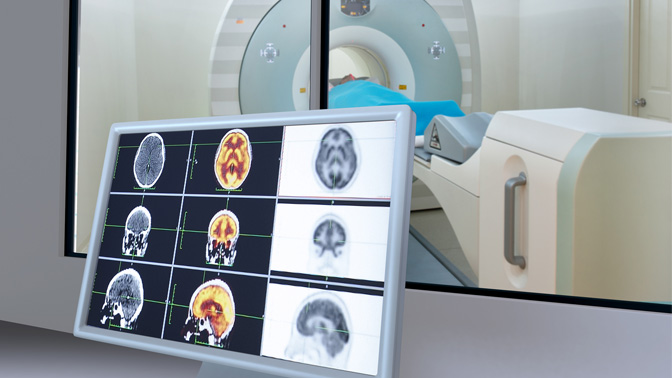
Dopamine receptors are a type of protein in the brain that are important for controlling movement, learning and decision-making. Given their wide-ranging effects, dopamine receptors are the target of several drugs used to treat a variety of diseases, including Parkinson disease and schizophrenia.
The effectiveness of these drugs can vary from one person to another and is influenced by a person’s genes. The dopamine receptor (like all proteins) is made from instructions carried in a person’s genetic code. Although minor changes in the gene coding for the receptor are relatively common, it is not clear how these changes could alter the effectiveness of the drugs that target the receptor.
To improve our understanding of this relationship, a team led by Dr. Antonio Strafella used advanced imaging methods, known as positron emission tomography (PET). The researchers examined PET images of dopamine receptor activity in the brain of healthy volunteers whose genes for the dopamine receptor differed by a single letter of the genetic code.
The team found that even such a small genetic change influenced the quantity and activity of dopamine receptors in the brain, especially within the ventral striatum, a brain region known to play a critical role in decision-making and processing rewards.
Understanding how genetic changes affect the distribution and activity of dopamine receptors in the brain can help scientists understand how gene variation influences treatment and a person’s response to medication.
This work was supported by the Canadian Institutes of Health Research, and the Toronto General & Western Hospital Foundation. Dr. A Strafella holds the Tier 2 Canada Research Chair in Movement Disorders and Neuroimaging.
Valli M, Cho SS, Masellis M, Chen R, Rusjan P, Kim J, Koshimori Y, Mihaescu A, Strafella AP. DRD2 Genotype-Based Variants Modulates D2 Receptor Distribution in Ventral Striatum. Mol Neurobiol. 2019 Mar 8. doi: 10.1007/s12035-019-1543-0.

Dr. Antonio Strafella, Senior Scientist, Krembil Research Institute. Photo courtesy of the Globe and Mail.

